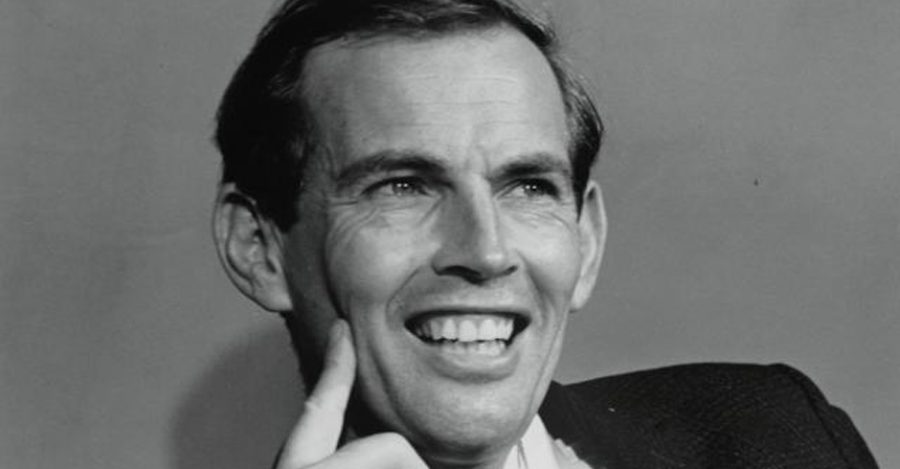
Behind The Scenes Of The World’s First Heart Transplant, 50 Years Ago Today In South Africa
Today, 50 years ago, Professor Chris Barnard did the seemingly impossible: he successfully performed the world’s first human heart transplant. Tonight South African current affairs programme Carte Blanche will look back on this seminal moment in South African and world history. (If you’re overseas you can watch the tribute on Showmax from Tuesday.) “We celebrate […]

Today, 50 years ago, Professor Chris Barnard did the seemingly impossible: he successfully performed the world’s first human heart transplant. Tonight South African current affairs programme Carte Blanche will look back on this seminal moment in South African and world history. (If you’re overseas you can watch the tribute on Showmax from Tuesday.)

“We celebrate 50 years since Professor Chris Barnard performed the first successful heart transplant. Since that day, thousands of people have received the gift of a new heart,” says Carte Blanche.
The operation at the Groote Schuur Hospital in Cape Town – on the 3rd of December 1967 – turned Professor Chris Barnard into a worldwide celebrity, and in the process, placed the South African medical fraternity on the global map.

The first possible heart donor was a man classified at the time as “coloured”. Concerned – during the apartheid era – that they would be accused of using black people for their medical experiments, the medical team reportedly chose to wait for a ‘white’ donor…
Ten days later that would be 25-year-old Denise Darvall who was left brain dead after being run over on Main Road in Observatory, Cape Town, by a drunk and speeding driver. She had been out with her family (her mother died instantly) buying cake for afternoon tea with friends.
Her father said in the four minutes it took him to agree to grant the doctors’ request for her heart to be used in the transplant he thought only of her… and therefore gave his permission.

The recipient was Louis Washkansy, who was in the final stages of heart failure. Although the heart transplant was successful, he sadly lived for only 18 days, succumbing in the end to pneumonia. His new heart beat strongly to the end.
Barnard was assisted in the op by his younger brother Marius (who also studied medicine and became Barnard’s right hand man in the Department of Cardiology) and a team of 30 staff. It was Marius who convinced Barnard to inject Darvall’s heart with potassium to paralyse it, rather than wait for it to stop beating; and it was Marius – together with Dr Terry O’Donovan – who removed Darvall’s heart, so that Barnard could transplant it into Washkansy.
The Barnard boys had grown up in Beaufort West where their father was a minister in the Dutch Reformed Church. One of their two other brothers had died from a heart problem when he was just three.

At the time of the historic operation, there was no media around. As Chris Barnard left the hospital on Sunday morning 3 December 1967, he called the hospital superintendent to inform him he’d performed a human-to-human heart transplant, allegedly saying “no, it wasn’t dogs. It was human beings… two human beings.” (Preparation for the first human heart transplant had been by working on dogs in the laboratory.)
The news had spread fast, making international headlines. Barnard said afterwards: “On Saturday, I was a surgeon in South Africa, very little known. On Monday, I was world-renowned.”
According to The Conversation: “Following this medical triumph, the South African government called on Barnard to help promote South Africa’s image around the world. A patriot at heart, he mostly obliged. But, back in South Africa, he was fiercely opposed to apartheid and later refused to allow ongoing segregation of black and white patients in his intensive care wards at Groote Schuur hospital.”

His anti-apartheid views led to ongoing clashes with hospital authorities and politicians.
In his personal life, Barnard’s first marriage to Aletta Gertruida Louw, with whom he had two children, ended in 1969, and a year later he married Barbara Zoellner, an heiress who was the same age as his son was at the time – 19. They had two children and divorced 12 years later. He married a third time – to model Karin Setzkorn. The marriage also only lasted 12 years, and they too had two children.

Dr Chris Barnard passed away on 2 September 2001 after suffering a severe asthma attack while on holiday in Paphos, Cyprus.
Today marks 50 years since Professor Chris Barnard performed the world's first heart transplant. pic.twitter.com/hLA9PCux2C
— SABC News (@SABCNews) December 3, 2017
Karen Barnard and James Brent-Styan at today's 50th commemoration of the first successful heart transplant #ChrisBarnard pic.twitter.com/Tv90mwfkAx
— Martin Slabbert (@martinslabbert) December 3, 2017
At Groote Schuur Hospital celebrating Worlds First heart transplant performed by Dr Chris Barnard 50 years ago! This Video is in the Room where the Donor surgery took place. Her name Denise Darvall-she died in an accident at 25. Her heart became the most famous ❤️ in the world! pic.twitter.com/OJLn5mvl37
— Leanne Manas (@LeanneManas) December 1, 2017
Today, 50 years ago, Professor Chris Barnard did the seemingly impossible: he successfully performed the world’s first heart transplant. Tonight @journojohn looks back on this seminal moment. #CarteBlanche @MNet 7pm pic.twitter.com/TYyxkNaT0c
— Carte Blanche (@carteblanchetv) December 3, 2017
To watch #CarteBlanche and thousands of other popular local shows & movies, subscribe to Showmax International now. You can try it FREE for 14 days.
MORE
Was Hamilton Naki directly involved in the first heart transplant in South Africa?
